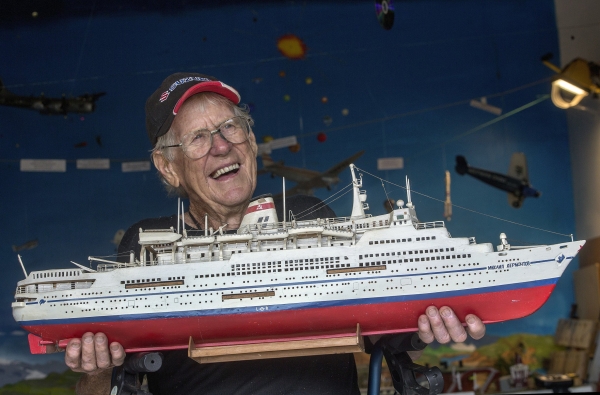The Coach House Museum is the lucky recipient of a lifetime of model-making by Palmerston North man, Trevor Hobman.
Trevor – a retired floorer - hand crafted wooden models of ships, aircraft, trams and trains. All the models were made in his garage in Palmerston North using scrap wood he collected, with the only cost being the paint! Before he had a computer to access plans online, he created his own plans of the models, using just photographs and drawings and a good eye for scale.
Trevor’s favourite model was the Mikhail Lermontov, a luxury Russian cruise ship which sank in the Marlborough Sounds in 1986.

For some, the models bring about a sense of nostalgia: "A lot of the old people that come in... it brings back memories”.
Trevor started off with planes but went on to create a variety of models, including a penny farthing. He liked “to make the first ones in the world”.
Sorry, no articles have been added to this area yet.